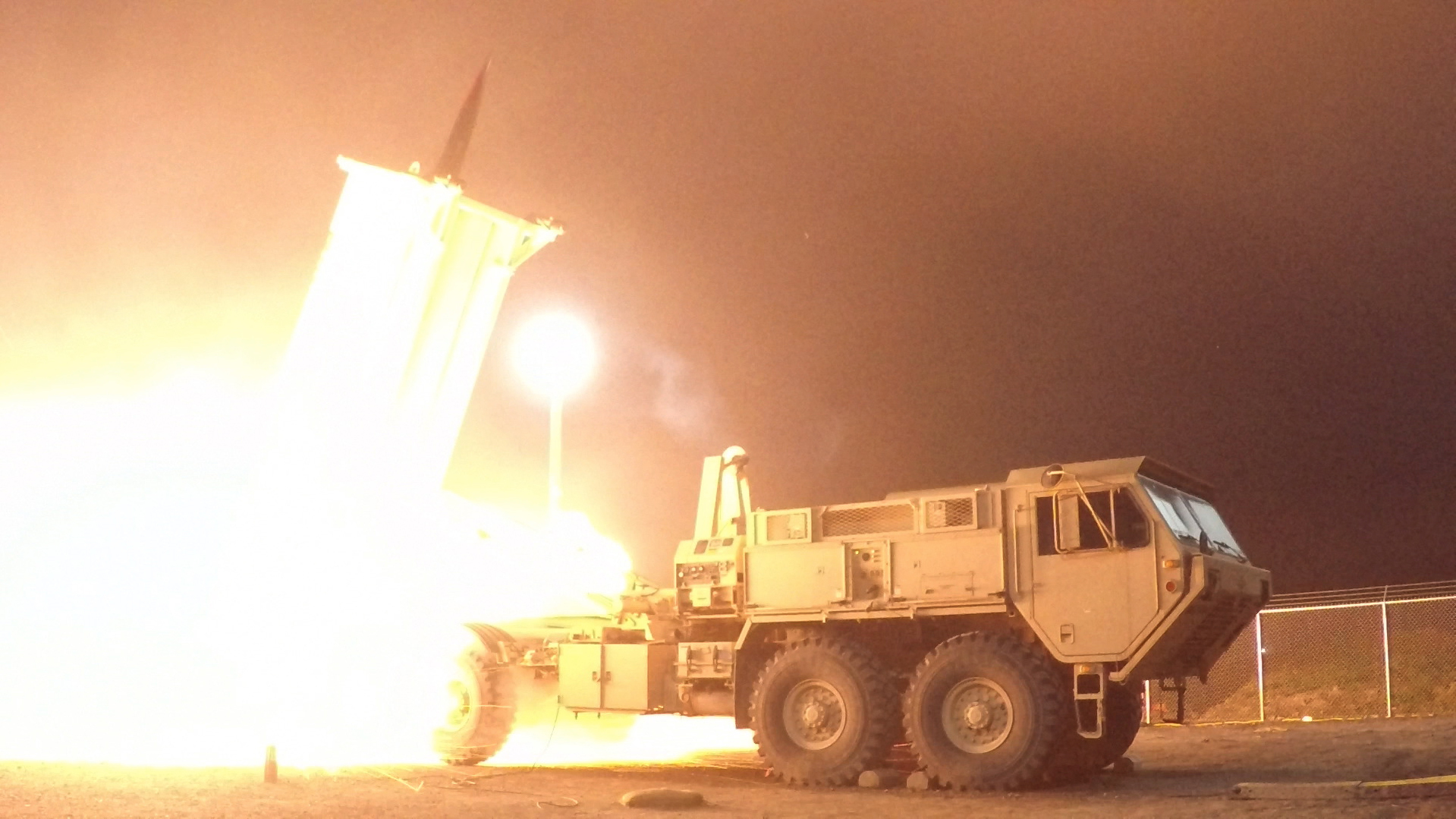
A Terminal High Altitude Area Defense (THAAD) interceptor is launched from the Pacific Spaceport Complex Alaska in Kodiak, Alaska, on July 30, 2017. During the test, the THAAD weapon system successfully intercepted an air-launched, medium-range ballistic missile target. MDA photo by Leah Garton.
A Washington think tank on Thursday called for a set of steps to improve US air and missile defense.
The Center for Strategic and International Studies, in Distributed Defense: New Operational Concepts for Integrated Air and Missile Defense, said air and missile defense (AMD) forces have been “all too absent” from discussions of how the US military should deal with possible conflicts with near-peer adversaries schooled in the US approach to war.
“Against near-peer threats, today’s AMD force is unfortunately far too susceptible to suppression,” but new operational concepts, including more distributed AMD operations, are one way to change the situation.
“Our adversaries have gone to school on us, perhaps it’s time to go to school on them,” said one of the report’s authors, CSIS senior fellow and director of the Missile Defense Project, Thomas Karako, during an event to release the report.
Although, the report says, the air and missile defense field is in particular need of innovation, “detailed discussions for how today’s AMD force and associated doctrines should adapt seem thus far to still be at the margin.”
Problems such as stovepiping, sectored radar coverage, and a ballistic-missile-heavy focus “have created a brittle AMD force all too vulnerable to exploitation,” the report said, adding that while these issues have been recognized since the 1990s, as a practical matter they “remain largely unaddressed.”
The report proposed a series of steps and said the “distributed defense” concept “focuses on creating a new architecture for today’s fielded, or soon-to-be-fielded, force.”
AMD should be integrated to better use “any sensor, best shooter” principles, as long as it is consistent with and expanding on the current program of record, the report said, adding that enabling launch and engage on remote capabilities would “extend the range and defended area of US AMD systems.” Likewise, assuming there is sufficient integration and networking, the report said componentizing radar, launcher, and command-and-control elements would give commanders more ability to “tailor defense designs or to disperse elements over a wider area.”
The report also called for mixed loads, saying that more interceptor-agnostic launchers would provide new flexibility and better provide a layered defense. “An ‘any shooter, any launcher’ approach could support a kind of ‘layered defense in a box’ to help alleviate capacity and capability strains,” the report says.
The report also called for better integrating strike and defense in the same firing units, or even launchers, saying an any-launcher, any-mission capability “could better defeat future missile threats rather than simply defend against them.”
Current missiles could also be adapted to support new missions against different types of targets, the report said, which could further increase the flexibility of multi-mission fires and lower costs.
Using camouflage and concealment would allow puttin?g networked launchers into nondescript cargo containers, making defenses less vulnerable. The report says containerization would support “deception in the form of a limited shell game, featuring numerous distributed dummy launchers with optical, thermal, and electronic signatures comparable to the real thing.”
“Building on one another in roughly sequential manner, these seven concepts are collectively marked by improved resilience, modularity, and greater offense-defense integration,” the report said. “All of this is designed to deter or prevent an adversary from using its air and missile forces effectively.”
